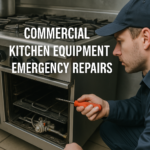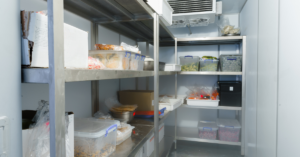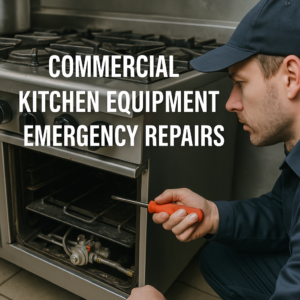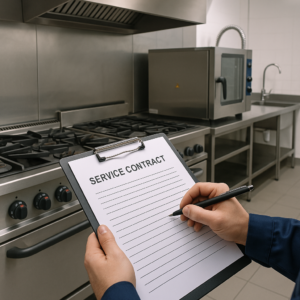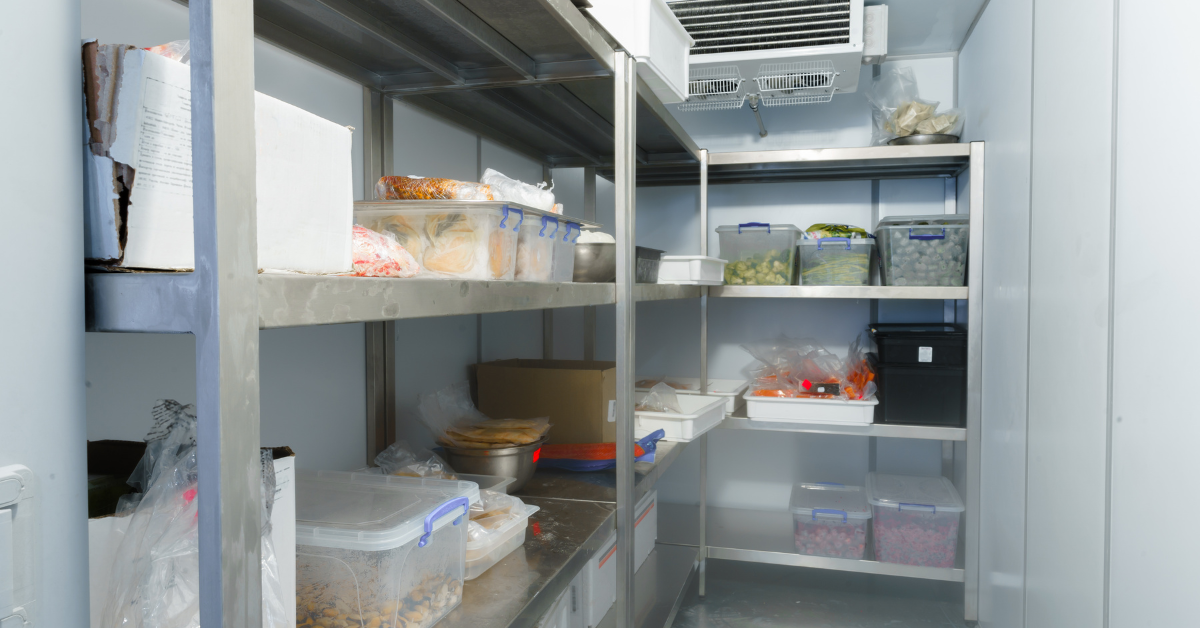
Refrigeration doesn’t get applause. It doesn’t plate food, serve cocktails, or post cool content online. But behind the scenes? It’s the engine keeping everything from your walk-in to your lowboys quietly humming. And when it slips—even a little—it doesn’t just cost energy; it bleeds money. Efficiency nosedives, food quality takes a hit, and surprise repairs stomp all over your budget.
From the contractor’s side of the wrench, we’ve seen it all: iced-over coils, melted compressors, units choked with grime. Almost every big-ticket failure started with something small, preventable, and overlooked. So here’s the real advice—the kind facilities managers and kitchen operators actually need, but rarely hear.
1. Clear those coils (before they choke your wallet)
We get it—no one wants to bend behind a cooler with a brush. But condenser coils, when coated in grease, dust, and whatever floats through your kitchen air, start to suffocate. Airflow drops, temperatures climb, compressors overwork… and your energy bill gets fatter than your brisket.
We’ve walked into kitchens where the coil looked like it had been dredged from a swamp. That buildup forces the system to run longer and harder, driving up wear. Cleaning coils monthly—not yearly—is cheap and crucial. Especially in high-volume kitchens, it makes a real difference.
2. Check door gaskets like you check your phone
Worn, cracked, or loose gaskets are silent assassins. A tiny tear can suck in warm, humid air all night long. That moisture fogs up evaporators, invites frost buildup, and throws internal temps out of whack. And if it’s a reach-in that staff open 300 times a day? That leak’s costing you real money.
A tight seal saves energy. It also keeps your system from cycling more than necessary. We recommend managers add gasket inspection to their weekly walkthroughs—press your fingers around the door edge, check for warps, listen for that satisfying whoosh when it closes.
3. Don’t block vents and fans (your airflow matters)
It seems harmless—stacking product in front of the fan or packing the fridge to the ceiling. But that airflow inside your unit isn’t just there for fun. It’s precisely calibrated. Blocked vents restrict circulation, which creates hot spots and makes the system compensate. Over time, it strains the blower motor and throws off defrost cycles.
Train your team: leave room around the fan. Don’t overstock. Label shelves if you have to. A few inches of clearance could mean the difference between a healthy system and a meltdown at lunch rush.
4. Set it and leave it: Thermostats aren’t volume knobs
We’ve seen staff crank thermostats down “just to be sure” things stay cold. It doesn’t work that way. Dropping the setting doesn’t cool faster—it just forces the system to run longer. That shortcut will trash your compressor faster than a rat in a bread box.
Thermostats are precise tools. They should be calibrated by a tech annually and left alone. If product temps are off, call for service. Don’t play guessing games with food safety.
5. Log everything: Temps, cycles, complaints
You can’t manage what you don’t track. And yet, too many places have zero records when we ask how the unit’s been performing. A simple log—daily temps, any noise complaints, frost sightings—can help catch problems before they snowball. It gives your tech real info to work from, which means quicker, cheaper fixes.
Digital logs? Even better. They help you spot trends. And if you ever need to show documentation during an inspection or insurance claim? You’ll be glad you kept them.
6. Schedule preventive maintenance—not just repairs
Don’t treat your refrigeration system like a rental car. Wait until it fails, and you’ll always be paying more. Emergency calls are expensive, parts are pricier under pressure, and downtime is devastating for foodservice.
Smart facility managers know: two PM visits a year pays off. A tech can spot refrigerant issues, tighten electrical connections, clean drain pans, test pressures—basically stop breakdowns before they ruin your Friday night service.
7. Watch for early warning signs—because they’re always there
Funny noises, water pooling on the floor, a unit running louder than normal—these aren’t quirks, they’re cries for help. Compressor short-cycling? That’s your system saying fix me. Odors, frost patterns, uneven cooling—all of them are red flags we see right before big problems.
Train your staff to report weird behavior. The sooner a tech sees it, the cheaper and easier the fix will be.
Day & Nite All Service: Contractors Who Care About Cold
We’ve been in kitchens before the sun comes up and after the last dish goes out. We’ve crawled behind freezers in the middle of the July heat wave and changed evaporator fans in walk-ins so cold it feels like punishment. That’s what we do. But our best work? It’s done before the system breaks.
If you’re ready to stop rolling the dice with your refrigeration system, give us a call. We’ll build a custom maintenance schedule that makes sense for your space, your volume, your budget. And we’ll do it with the kind of experience that prevents drama… not just fixes it.

